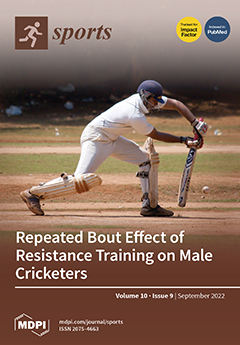Open AccessEditor’s ChoiceArticle
Fitness Trainers’ Educational Qualification and Experience and Its Association with Their Trainees’ Musculoskeletal Pain: A Cross-Sectional Study
by
Sohel Ahmed, Mamunur Rashid, Abu-sufian Sarkar, Mohammad Jahirul Islam, Rahemun Akter, Masudur Rahman, Shahana Islam, Devjanee Sheel, Sarwar Alam Polash, Mahfuza Akter, Shayed Afride and Manzur Kader
Cited by 4 | Viewed by 3147
Abstract
This is a cross-sectional study that examined the association between fitness trainers’ educational qualifications and experience, and the risk of their trainees’ musculoskeletal pain. The study included 1177 trainees (aged 15–60 years) from 74 fitness centers in Bangladesh. Data were collected by using
[...] Read more.
This is a cross-sectional study that examined the association between fitness trainers’ educational qualifications and experience, and the risk of their trainees’ musculoskeletal pain. The study included 1177 trainees (aged 15–60 years) from 74 fitness centers in Bangladesh. Data were collected by using the Nordic musculoskeletal questionnaire, including potential confounders such as demographic factors (e.g., age, occupation), and training-related factors (e.g., workout knowledge, overweight lifting). Multiple logistic regression was performed for a binary outcome (pain—yes or no), and a generalized linear model was fitted for the ordinal outcome (pain—sites of the body). The trainers’ lower experience (no or ≤1 year) was associated with higher odds of their trainees’ musculoskeletal pain (OR: 2.53, 95% CI: 1.18–5.44) compared to trainers with >5 years of experience; however, no association was found between the trainers’ education and the risk of their trainees’ musculoskeletal pain, after controlling for potential confounders. Similarly, the trainees trained by trainers with lower experience had more than two-time the risk of having pain in different sites (IRR: 2.04, 95% CI: 1.50–2.79). The trainers’ experience may play a pivotal role in the trainees’ musculoskeletal pain. Further study is warranted in this regard.
Full article
►▼
Show Figures






